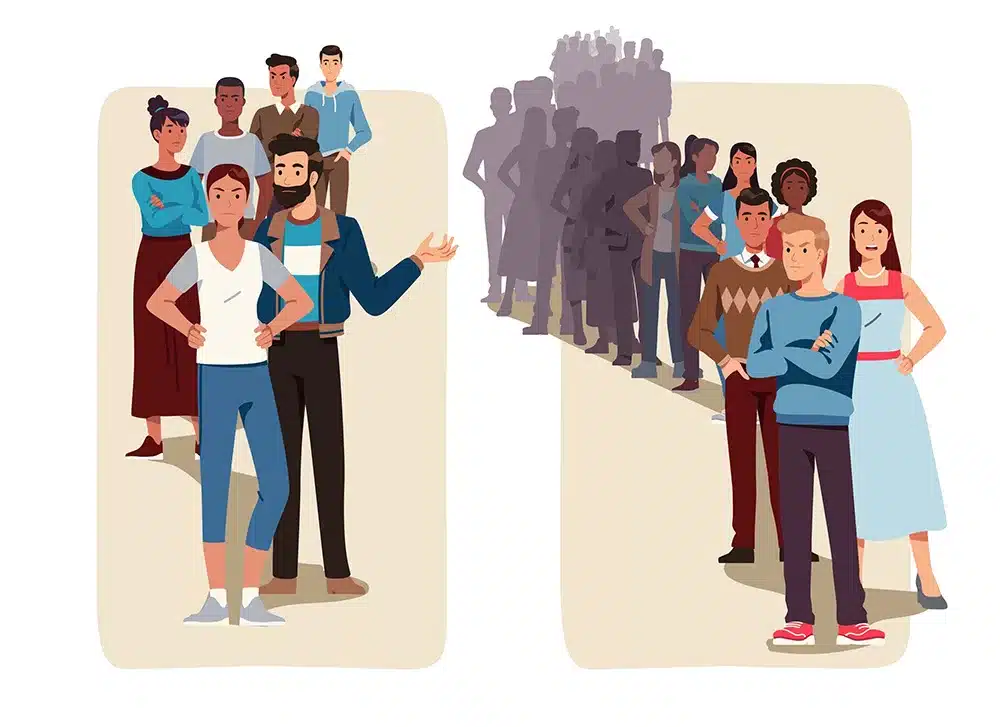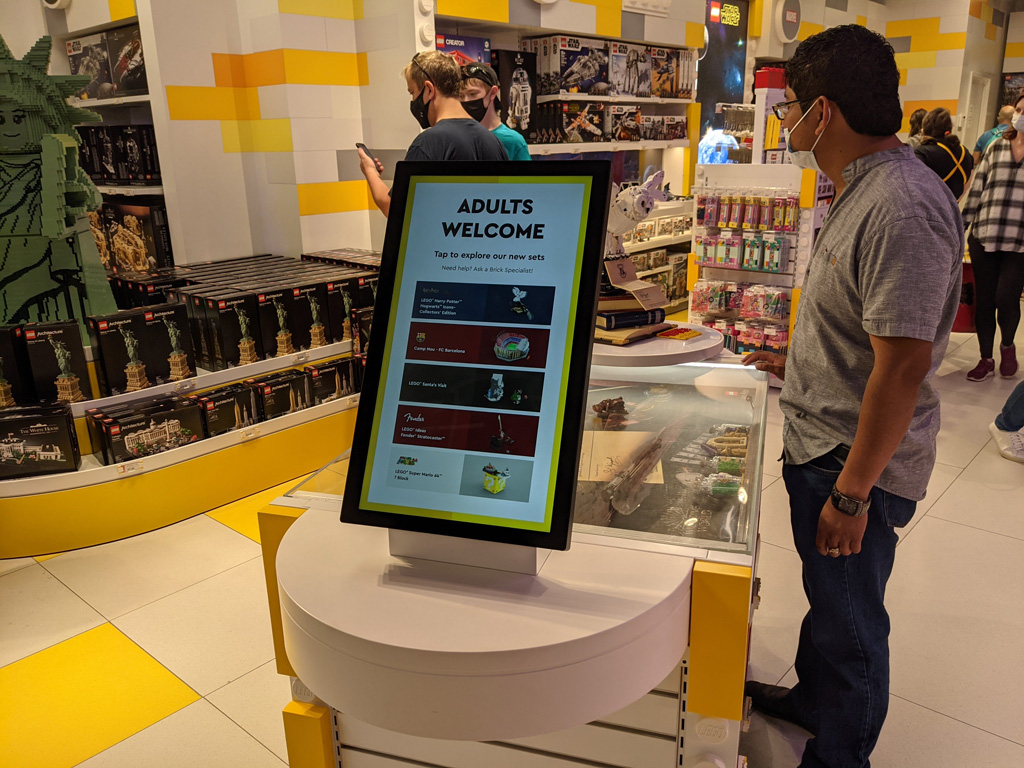-
German automobile industry: 2024 analysis and outlook [Research]
By Pierre-Nicolas Schwab •
The German automobile industry is in a critical situation. German manufacturers are staking their survival on a shrinking market and a growing number of players, particularly in electric mobility. This article provides a comprehensive overview of the situation.
![Illustration of our post "German automobile industry: 2024 analysis and outlook [Research]"](https://www.intotheminds.com/blog/app/uploads/volkswagen-wolfsburg.jpg)
-
Should customer satisfaction still be a priority?
In this article, I explain why, despite the current economic climate and the dominance of the "price" factor, customer satisfaction remains the #1 indicator for any company. But you still need to know how to measure it.

-
Customer complaints: ChatGPT responds better than humans
In this article, I will tell you about market research that compares the quality of human responses to those of ChatGPT when managing customer complaints. The results then lead me to question the future of the human element in customer relations.

-
Customer trust: 549 Market Research studies reveal their secrets
In this article, you'll discover the 8 factors influencing customer confidence in a company. Confidence is a central concept that plays a role in customer satisfaction and loyalty, among other things.

-
The 6 barriers to company transfers
Why start a company if you can take over one? 5 out of 6 closed companies were not taken over, yet most were viable. This article presents the figures for company transfers in Europe and analyzes the barriers to takeovers.

-
The 7 profiles of social network users
By Pierre-Nicolas Schwab •

-
It’s getting harder and harder to produce ideas
Scientific research shows that researchers in computer science, agriculture, and medicine are becoming less and less efficient

-
Is it still possible to innovate? The productivity challenge.
In this article, I analyze the slowdown in the pace of disruptive innovation. Our standard of living has increased only marginally since the early 2000s. The causes are to be found in the falling productivity of scientific research.

-
Growth managers don’t post enough on LinkedIn
In this exclusive research, you will discover that growth managers in B2B companies are inactive on LinkedIn. The figures are startling. This is detrimental to their ability to generate leads.

-
Measuring customer satisfaction: SMEs are lagging
Research shows that SMEs measure satisfaction less frequently than larger companies. In this article, we provide a clear explanation based on published research.

-
Research reveals YouTube’s most secret stats
If you want to know everything there is to know about YouTube stats, this is the article for you. Research from 2023 takes an innovative technical approach to the most secret of YouTube stats.

-
The downside of participative marketing
Co-creation can be an interesting marketing approach for strengthening ties with customers. However, it is important to consider the possible negative effects of such a project. The example analyzed in this article demonstrates this.

-
Free returns on the way out, despite their benefits
Free returns are becoming the exception rather than the rule in e-commerce. Yet scientific research reveals that their impact on sales and customer loyalty is enormous.

-
The 5 types of qualitative interviews and their applications
If you plan to conduct qualitative interviews (e.g., for market research), you need to think carefully about which variant best suits your project. In this article, we'll look at the different variants and explain when to use them.

-
Market research: When should you involve your customers?
Your customers can actively participate in developing new products and services. This is the principle of co-creation. But involving them at the right time is important so the process runs smoothly. We give you the keys to understanding this in this article.

-
Don’t smile too much if you want to be perceived as competent
How can you increase your chances of turning a prospect into a customer? Closing the deal also depends on how competent you feel. Research unravels some of the mysteries.

-
Colruyt champion of price changes [Research]
In this research, we reveal how 3 retailers (Carrefour, Delhaize, Colruyt) adapt their prices. The enormous differences show that Colruyt is aggressively defending its market share and marketing positioning.
![Illustration of our post "Colruyt champion of price changes [Research]"](https://www.intotheminds.com/blog/app/uploads/pricing.jpg)
-
Europeans want porn as much as news
In this article, we analyze the most searched keywords in 27 European countries. They will help you understand what people in the 27 EU countries are interested in. The results are surprising.

-
Customer satisfaction: priority to reducing waiting times
Waiting time has an impact on customer satisfaction. Research published in 2023 reveals 3 specific findings that help companies understand how to manage waiting time to maximize customer satisfaction.

-
E-commerce: worrying trends for 2023-2024
The situation for e-commerce retailers is no longer as positive as it once was. The slowdown is noticeable but does not affect all sectors similarly. In this article, we propose a summary of the latest e-commerce statistics. We also draw a parallel with a survey of e-commerce bosses.

-
The 3 reasons pushing our society towards decivilization
Many people feel that our societies are in the process of decivilization, i.e., that their rules of operation are failing. This is reflected in an increase in violence and incivilities. But is this true? In this article, you'll discover some edifying figures and learn more about the 3 causes of this decivilization.

-
75% of backlinks come from translations [Research]
Find out in this research whether you should invest in translating your content to gain backlinks. Based on a website with a Domain Ranking (DR) of 58, we show that 3/4 of links are made to translated pages and that 72.7% of backlinks are in the same language as the source page.
![Illustration of our post "75% of backlinks come from translations [Research]"](https://www.intotheminds.com/blog/app/uploads/langues-langages-talen.jpg)
-
Here is how we get 35% of our backlinks
In today's article, we present an exclusive analysis of our backlinks. Based on figures and statistics, our strategy yields 35% of our backlinks, up to 46% for websites with a Domain Ranking above 58.

-
Subscriptions: Increase +200% revenues thanks to automatic renewal
Research conducted in 2023 analyzes the effects of automatic subscription renewal. Customers who forget to renew their subscriptions increase retailers' revenues by 14% to over 200%.

-
92% of Michelin-starred restaurants require a credit card deposit
Asking for a credit card deposit in restaurants has become common practice when making reservations. In the research we've just carried out, 92% of Michelin-starred restaurants required it. We also found that the amounts requested vary widely, averaging 60% of the price of the most expensive menu. Find out all the results in this article and the restaurant's name that requires €2,000 prepayment per guest.

-
Electric vehicles: Too Many Variations in Charging Prices
Research into charging prices for electric vehicles via the Chargemap platform reveals incomprehensible differences between operators and countries. Differences of 1 to 9 are highlighted, as well as billing models that make driving in electric mode unprofitable in 32.6% of cases compared to gasoline.

-
Retailers believe in the benefits of in-store digital
A survey published in 2023 reveals retailers' expectations of in-store digital devices. For 89% of retailers, digital enhances the brand image. But do the expected benefits of in-store digital resist critical analysis? Read on to find out.

-
Heatwave: what effects on development and Europe?
The economic impact of the heatwave has been estimated at 0.6 points of GDP. The effects vary from country to country, and Europe is particularly hard hit. This article also looks at possible solutions for companies and proposes a medium- and long-term analysis of the effects on regions affected by the heatwave. Dubai is an example of an area that has implemented strategies to remain competitive despite the heatwave.

-
In-store digital: customers want efficiency [Survey]
According to a survey published in 2023, consumer interest in in-store digital devices fell sharply in 2022. After continuous growth, thanks to Covid, most customers no longer see the point. This article will help you understand what's at stake in these changes and how they came about.
![Illustration of our post "In-store digital: customers want efficiency [Survey]"](https://www.intotheminds.com/blog/app/uploads/flagship-store-lacoste-paris-champs-elysees-14-1024x768.jpg)
-
Recruitment by co-optation: state of the French market [survey]
![Illustration of our post "Recruitment by co-optation: state of the French market [survey]"](https://www.intotheminds.com/blog/app/uploads/shutterstock_2070689711-scaled-e1688048891453-1024x431.webp)
-
Market Research: is ChatGPT reliable?

-
What do Europeans truly think about their future pensions?

-
Hawthorne Effect: definition, impact, examples

-
Online survey : how to reduce the Dropout rate

-
4 Factors to increase the participation rate in a survey

-
What factors most influence survey participation?

 The blog of the Marketing Agency
The blog of the Marketing Agency